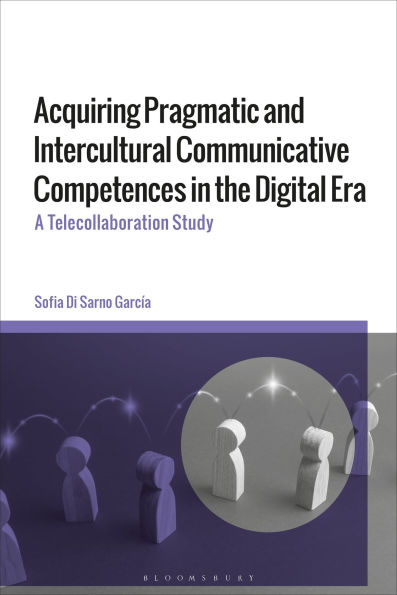This book explores second language pragmatic development and intercultural communicative competence acquisition through telecollaboration. It shows how telecollaborative environments are appropriate for the development of these two competences and how they are inextricably interrelated.
Acquiring Pragmatic and Intercultural Communicative Competences in the Digital Era draws a comparison between the effects of telecollaboration projects and traditional face-to-face instruction within the foreign language classroom for developing pragmatic competence and intercultural communicative competence. Analysis is based on research into how undergraduate Spanish learners of English engage in telecollaboration projects with first language or highly proficient speakers of English and in traditional face-to-face instruction with their Spanish partners. Using synchronous (Zoom) and asynchronous (MeWe) digital tools, the book explores the beneficial role of telecollaboration projects in second and foreign language settings, offering researchers and teachers an example of how to implement this kind of project in their language teaching practices.
1148324216
Acquiring Pragmatic and Intercultural Communicative Competences in the Digital Era draws a comparison between the effects of telecollaboration projects and traditional face-to-face instruction within the foreign language classroom for developing pragmatic competence and intercultural communicative competence. Analysis is based on research into how undergraduate Spanish learners of English engage in telecollaboration projects with first language or highly proficient speakers of English and in traditional face-to-face instruction with their Spanish partners. Using synchronous (Zoom) and asynchronous (MeWe) digital tools, the book explores the beneficial role of telecollaboration projects in second and foreign language settings, offering researchers and teachers an example of how to implement this kind of project in their language teaching practices.
Acquiring Pragmatic and Intercultural Communicative Competences in the Digital Era: A Telecollaboration Study
This book explores second language pragmatic development and intercultural communicative competence acquisition through telecollaboration. It shows how telecollaborative environments are appropriate for the development of these two competences and how they are inextricably interrelated.
Acquiring Pragmatic and Intercultural Communicative Competences in the Digital Era draws a comparison between the effects of telecollaboration projects and traditional face-to-face instruction within the foreign language classroom for developing pragmatic competence and intercultural communicative competence. Analysis is based on research into how undergraduate Spanish learners of English engage in telecollaboration projects with first language or highly proficient speakers of English and in traditional face-to-face instruction with their Spanish partners. Using synchronous (Zoom) and asynchronous (MeWe) digital tools, the book explores the beneficial role of telecollaboration projects in second and foreign language settings, offering researchers and teachers an example of how to implement this kind of project in their language teaching practices.
Acquiring Pragmatic and Intercultural Communicative Competences in the Digital Era draws a comparison between the effects of telecollaboration projects and traditional face-to-face instruction within the foreign language classroom for developing pragmatic competence and intercultural communicative competence. Analysis is based on research into how undergraduate Spanish learners of English engage in telecollaboration projects with first language or highly proficient speakers of English and in traditional face-to-face instruction with their Spanish partners. Using synchronous (Zoom) and asynchronous (MeWe) digital tools, the book explores the beneficial role of telecollaboration projects in second and foreign language settings, offering researchers and teachers an example of how to implement this kind of project in their language teaching practices.
108.0
Pre Order
5
1

Acquiring Pragmatic and Intercultural Communicative Competences in the Digital Era: A Telecollaboration Study
224
Acquiring Pragmatic and Intercultural Communicative Competences in the Digital Era: A Telecollaboration Study
224Related collections and offers
108.0
Pre Order

Product Details
| ISBN-13: | 9781350454361 |
|---|---|
| Publisher: | Bloomsbury Publishing |
| Publication date: | 12/11/2025 |
| Sold by: | Barnes & Noble |
| Format: | eBook |
| Pages: | 224 |
| File size: | 2 MB |
About the Author
From the B&N Reads Blog
